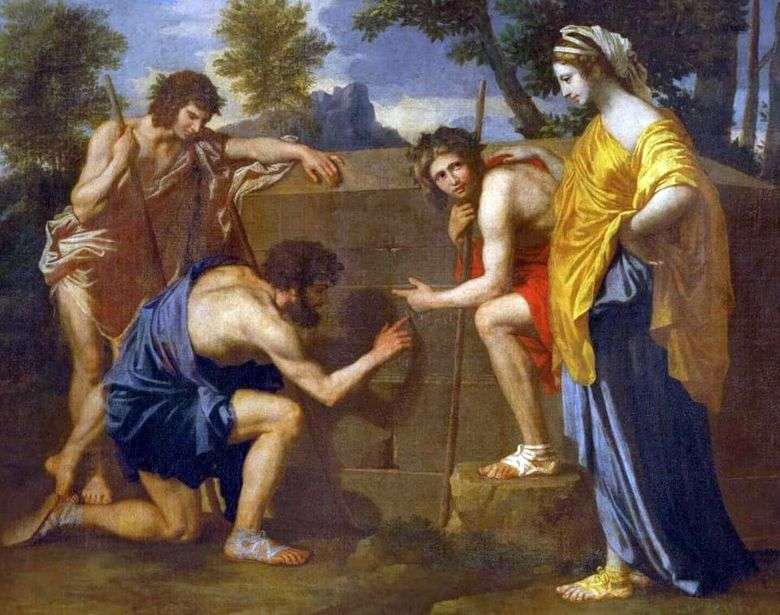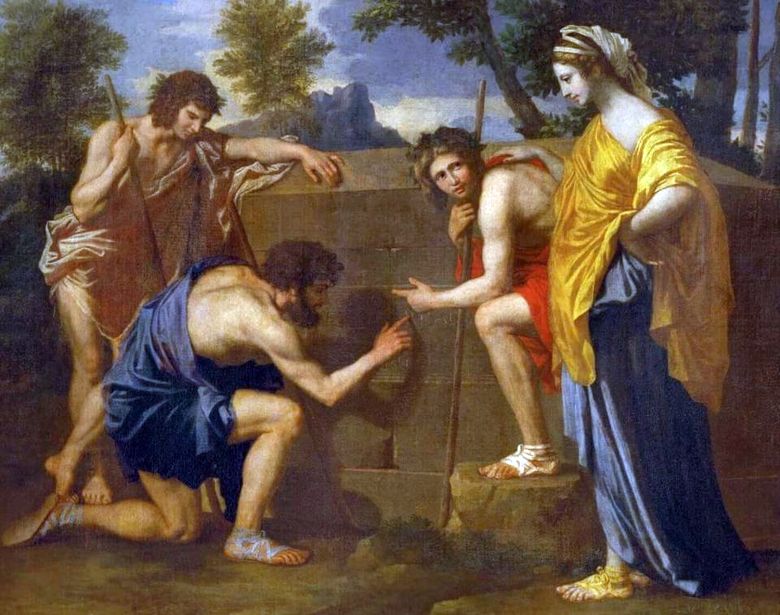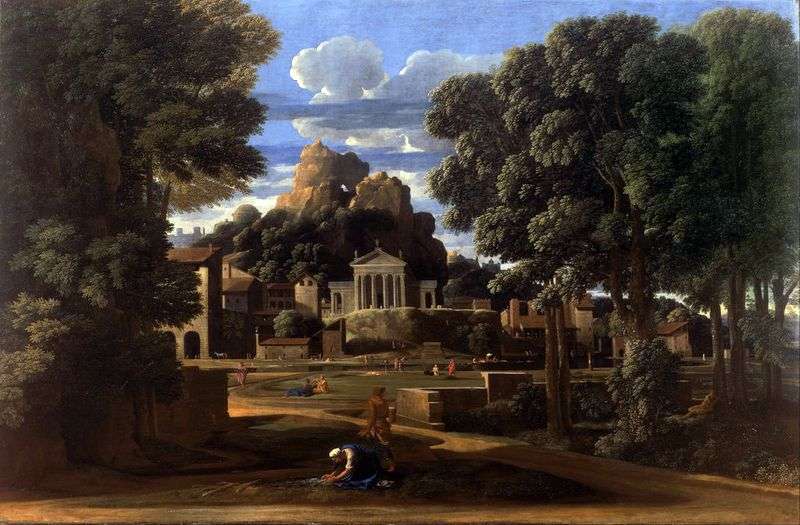
Poussin painted two pictures on this plot. Before us is the second of them, and the earlier one, dated 1628-30, is stored in the UK. It depicts a corner of Arcadia, a mountainous area in Greece.
In the literary tradition, Arcadia is synonymous with an idyllic country, where people live according to ancient and wise laws in complete harmony with nature. In short, they herd their flocks and cultivate their gardens. The shepherds in the Poussin painting stand near the grave with the inscription “Et in Arcadia ego”. This inscription is translated in different ways. But for the Russian ear, the translation is familiar – “And I was in Arcadia.”
The meaning of the inscription is as follows: lying under this tombstone also once lived in happy Arcadia, but even there death found him and led him to the gloomy arches of his underworld. Thus, we again meet with one of the eternal themes in culture – the theme of the frailty of earthly existence and the inevitability of death. Shepherds look reverently with curiosity. One of them seems to point at it to the viewer. “Arcadian shepherds” belong to the most famous works of Poussin, but, alas, we again know nothing about the history of its creation.
The first mention of it refers only to 1685, when the painting was acquired by King Louis XIV. Perhaps the reader will be curious to know that the composition of the “Shepherds” was reproduced on the new tomb of Poussin, erected in 1832 on his grave in the Roman church of San Lorenzo.
 Et in Arcadia ego by Nicolas Poussin
Et in Arcadia ego by Nicolas Poussin Death of Germanicus by Nicolas Poussin
Death of Germanicus by Nicolas Poussin Pastores Arcadianos – Nicolas Poussin
Pastores Arcadianos – Nicolas Poussin Arcade des bergers – Nicolas Poussin
Arcade des bergers – Nicolas Poussin Fokion’s Ashes by Nicolas Poussin
Fokion’s Ashes by Nicolas Poussin Repentance by Nicolas Poussin
Repentance by Nicolas Poussin Apollo and Daphne by Nicolas Poussin
Apollo and Daphne by Nicolas Poussin Landscape with a man who died from a snake bite by Nicolas Poussin
Landscape with a man who died from a snake bite by Nicolas Poussin